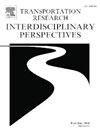The effect of remote work on urban transportation emissions: Evidence from 141 cities
IF 3.9
Q2 TRANSPORTATION
Transportation Research Interdisciplinary Perspectives
Pub Date : 2025-04-22
DOI:10.1016/j.trip.2025.101422
引用次数: 0
Abstract
The overall impact of working from home (WFH) on transportation emissions remains a complex issue, with significant implications for policymaking. This study matches socioeconomic information from American Community Survey (ACS) to the global carbon emissions dataset for selected Metropolitan Statistical Areas (MSAs) in the US. We analyze the impact of WFH on transportation emissions before and during the COVID-19 pandemic. Employing cross-sectional multiple regression models and Blinder-Oaxaca decomposition, we examine how WFH, commuting mode, and car ownership influence transportation emissions across 141 MSAs in the United States. We find that the prevalence of WFH in 2021 is associated with lower transportation emissions, whereas WFH in 2019 did not significantly impact transportation emissions. After controlling for public transportation usage and car ownership, we find that a 1% increase in WFH corresponds to a 0.17 kg or 1.8% reduction of daily average transportation emissions per capita. The Blinder-Oaxaca decomposition shows that WFH is the main driver in reducing transportation emissions per capita during the pandemic. Our results show that the reductive influence of public transportation on transportation emissions has declined, while the impact of car ownership on increasing transportation emissions has risen. This study underscores the need for a nuanced, data-driven approach in crafting WFH policies to mitigate transportation emissions effectively. This study contributes to the policy debate by advocating for WFH as a strategy to reduce transportation emissions. Concurrently, policymakers can mitigate its unintended consequences by promoting public transportation and encouraging the adoption of environmentally friendly commute modes.
远程工作对城市交通排放的影响:来自 141 个城市的证据
在家工作(WFH)对交通排放的总体影响仍然是一个复杂的问题,对政策制定具有重要影响。本研究将美国社区调查(ACS)中的社会经济信息与选定的美国大都会统计区(MSA)的全球碳排放数据集相匹配。我们分析了 WFH 在 COVID-19 大流行之前和期间对交通排放的影响。利用横截面多元回归模型和布林德-瓦哈卡分解法,我们研究了 WFH、通勤模式和汽车拥有量如何影响美国 141 个大都会统计区的交通排放。我们发现,2021 年的全职家庭与较低的交通排放相关,而 2019 年的全职家庭对交通排放没有显著影响。在对公共交通使用率和汽车拥有率进行控制后,我们发现,WFH 每增加 1%,人均日均交通排放量就会减少 0.17 千克或 1.8%。布林德-瓦哈卡分解法显示,在大流行病期间,WFH 是减少人均交通排放量的主要驱动力。我们的研究结果表明,公共交通对交通排放的减排影响有所下降,而汽车拥有量对交通排放增加的影响则有所上升。这项研究强调,在制定有效减少交通排放的全时家庭保健政策时,需要采用细致入微、以数据为导向的方法。本研究通过倡导将全时家庭住房作为减少交通排放的一项战略,为政策辩论做出了贡献。同时,政策制定者可以通过推广公共交通和鼓励采用环保通勤模式来减轻其意外后果。
本文章由计算机程序翻译,如有差异,请以英文原文为准。
求助全文
约1分钟内获得全文
求助全文
来源期刊

Transportation Research Interdisciplinary Perspectives
Engineering-Automotive Engineering
CiteScore
12.90
自引率
0.00%
发文量
185
审稿时长
22 weeks
 求助内容:
求助内容: 应助结果提醒方式:
应助结果提醒方式:


